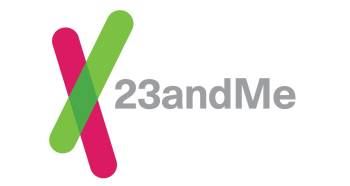The following press release was written by 23andMe:
 SUNNYVALE, Calif., Dec. 28, 2021 (GLOBE NEWSWIRE) -- 23andMe Holding Co. (Nasdaq: ME) (“23andMe”), a leading consumer genetics and research company, today announced the results of the completed redemption (the “Redemption”) of all of its outstanding warrants (the “Warrants”) to purchase shares of Class A common stock of 23andMe that were issued under the Warrant Agreement, dated October 1, 2020 (the “Warrant Agreement”), by and between 23andMe and Continental Stock Transfer & Trust Company, as warrant agent. The Warrants include the public warrants (the “Public Warrants”) issued as part of the units sold in the initial public offering (the “IPO”) of 23andMe, which was formerly known as VG Acquisition Corp., and the private warrants that were sold in a private placement simultaneously with the IPO.
SUNNYVALE, Calif., Dec. 28, 2021 (GLOBE NEWSWIRE) -- 23andMe Holding Co. (Nasdaq: ME) (“23andMe”), a leading consumer genetics and research company, today announced the results of the completed redemption (the “Redemption”) of all of its outstanding warrants (the “Warrants”) to purchase shares of Class A common stock of 23andMe that were issued under the Warrant Agreement, dated October 1, 2020 (the “Warrant Agreement”), by and between 23andMe and Continental Stock Transfer & Trust Company, as warrant agent. The Warrants include the public warrants (the “Public Warrants”) issued as part of the units sold in the initial public offering (the “IPO”) of 23andMe, which was formerly known as VG Acquisition Corp., and the private warrants that were sold in a private placement simultaneously with the IPO.
On November 22, 2021, 23andMe issued a press release stating that it would redeem all of the Warrants that remained outstanding following 5:00 p.m. New York City time on December 22, 2021 (the “Redemption Date”) for a redemption price of $0.10 per Warrant.
In connection with the Redemption, approximately 23,901,466 Warrants were exercised, representing approximately 95% of the outstanding Warrants.
In connection with the Redemption, the Public Warrants stopped trading on the Nasdaq Global Select Market and were delisted. The Redemption had no effect on the trading of 23andMe’s Class A common stock, which continues to trade on the Nasdaq Global Select Market under the ticker symbol, “ME.”
About 23andMe
Founded in 2006 and headquartered in Sunnyvale, California, 23andMe is a leading consumer genetics and research company. 23andMe’s mission is to help people access, understand, and benefit from the human genome. 23andMe has pioneered direct access to genetic information as the only company with multiple U.S. Food and Drug Administration authorizations for genetic health risk reports. 23andMe has created the world’s largest crowdsourced platform for genetic research, with 80% of its customers electing to participate. The 23andMe research platform has generated more than 180 publications on the genetic underpinnings of a wide range of diseases, conditions, and traits. The platform also powers the 23andMe therapeutics group, which is currently pursuing drug discovery programs rooted in human genetics across a spectrum of disease areas, including oncology, respiratory, and cardiovascular diseases, in addition to other therapeutic areas. More information is available at www.23andMe.com.
Forward-Looking Statements
This press release contains forward-looking statements within the meaning of Section 27A of the Securities Act of 1933, as amended, and Section 21E of the Securities Exchange Act of 1934, as amended. All statements, other than statements of historical fact, included or incorporated in this press release, are forward-looking statements. The words “anticipate,” “believe,” “continue,” “could,” “estimate,” “expect,” “intends,” “may,” “might,” “plan,” “possible,” “potential,” “predict,” “project,” “should,” “would,” and similar expressions may identify forward-looking statements, but the absence of these words does not mean that a statement is not forward-looking. The forward-looking statements contained herein are based on 23andMe’s current expectations and beliefs concerning future developments and their potential effects, but there can be no assurance that these will be as anticipated. These forward-looking statements involve a number of risks, uncertainties (some of which are beyond the control of 23andMe), or other assumptions that may cause actual results or performance to differ materially from those expressed or implied by these forward-looking statements. These risks and uncertainties include, but are not limited to, those risks factors described in the “Risk Factors” section and other sections of 23andMe’s most recent Quarterly Report on Form 10-Q and other current and periodic reports 23andMe files with the Securities and Exchange Commission from time to time. Investors are cautioned not to place undue reliance on any such forward-looking statements, which speak only as of the date they are made. Except as required by law, 23andMe does not undertake any obligation to update or revise any forward-looking statements whether as a result of new information, future events, or otherwise.
Contacts
Investor Relations Contact: investors@23andMe.com
Media Contact: press@23andMe.com
 Latest News Articles
Latest News Articles Do you have an RSS newsreader? You may prefer to use this newsletter's RSS feed at:
Do you have an RSS newsreader? You may prefer to use this newsletter's RSS feed at: